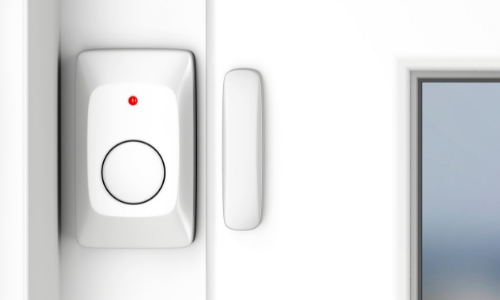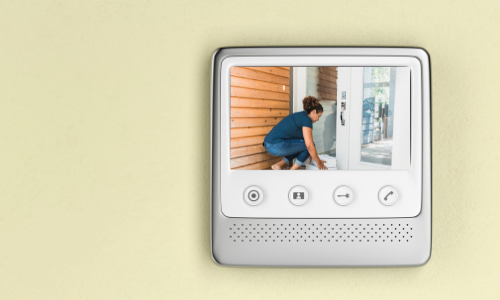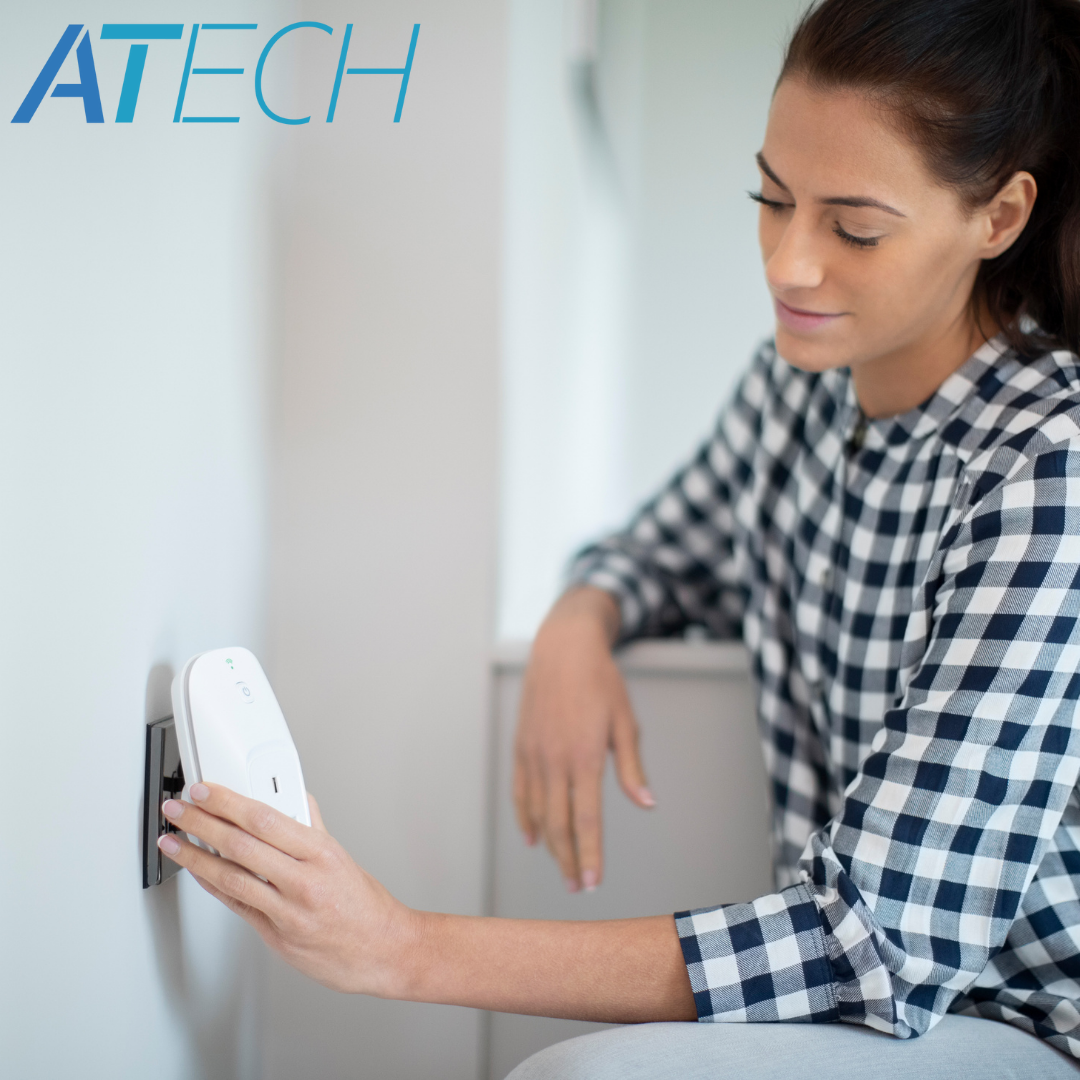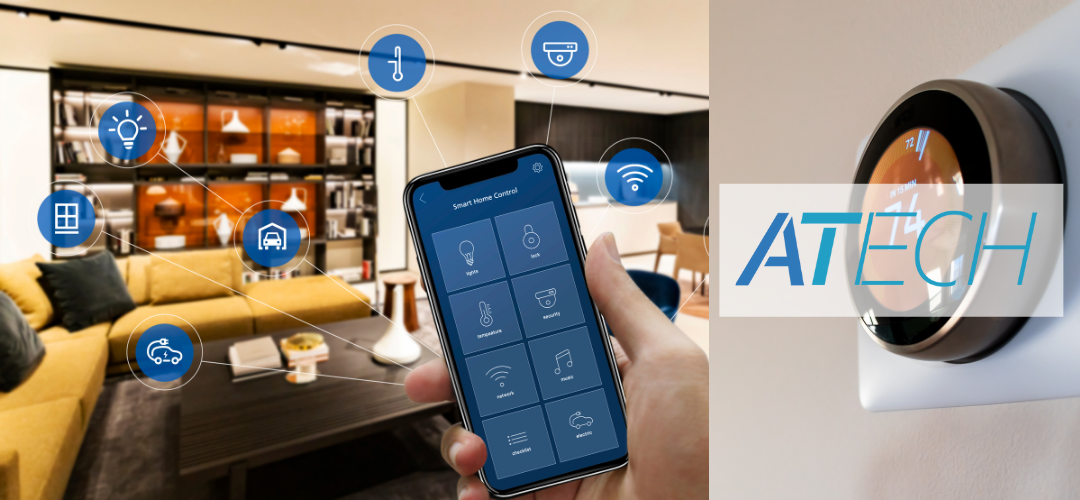With advancement in technology improving every day, assistive technology keeps getting better and better, providing more seamless integration into our lives. As direct-care givers, what’s the best, and easiest way we can use the new and emerging smart-home devices to assist in providing better care? Even if the current living environment is a traditional home or apartment, there are 8 easy-to-install and easy-to-use assistive technology tools that can greatly improve any home.
We live in a connected world; many new technologies are controlled using an app on a smartphone or tablet, are wifi accessible, and many are voice enabled, allowing you to make changes by simply speaking a voice command. For example, using a voice-controlled Amazon Alexa, Google Assistant, or Apple’s Homepod or Siri, you can lock doors and windows, adjust the lighting or air temperature, or turn appliances on or off.
1. Wireless Window and Door Sensors / Smart Locks
Small wifi sensors can be added to doors and windows via simple adhesive strips. Once installed, the sensors can alert you via a text message when a door or window has been opened or closed via a companion app. These simple sensors are frequently sold in a starter kit pack and can be installed in a matter of a few minutes. For staff members, these types of sensors are a boon as they alert you to whether a door or window is open or closed, and the sensors provide monitoring 24/7.
Keyless entry pads allow for an additional layer of security. Only those with the entry code can open the door from the outside, and those on the inside can open or unlock the door remotely. This is especially helpful nowadays with the need for contactless entry for staff entering into a home. Some models also log entries and exits via a cloud-based app, providing an additional level of data and control.


2. Video Doorbells
Video doorbells are small weatherproof devices that sit outside your front door, operating as a doorbell, and may also provide streaming high-resolution video with a 180-degree maximum field of view. They can be wireless, installed via a simple adhesive strip or screwed into a door plate, or wired into an alarm system as well. Video doorbells allow users to see and speak to visitors, delivery people, or anyone else who steps up to your door.
Some video doorbells have a built-in siren, as well as the ability to contact emergency services if necessary. Many have a feature that will automatically call a phone number or send a text notification if motion is detected at the doorway.
What assistive technology is best for your loved one?
3. Home Security Cameras
Security cameras have become ubiquitous in today’s modern age. While safety and privacy are of paramount concern, small security cameras can be positioned at various points both inside and outside a home to give a panoramic view of the main rooms of the home, or of all sides of the home’s exterior.
Wi-Fi-connected home security cameras deliver vivid high-resolution video and are packed with features including local and cloud storage, automatic motion tracking, and support for all the major voice assistance platforms.
4. Wifi Thermostats
Using a wifi enabled smart-home thermostat, you can easily control and monitor a home’s heating and cooling system by phone or voice command. These thermostats can be installed in approximately 30 minutes using the DIY instructions included in the packaging, or can also be installed by local service technicians. The thermostats can be installed in different rooms or zones in the home to ensure a consistent temperature throughout the house. Many models also allow for timer controlled settings to automatically raise or lower the temperature at a specific time of day or night. Many models are also accessible via a companion phone app that allows you to adjust the temperature remotely. This can be especially useful for remote staff providing support in a group home setting.
5. Smart Kitchen Appliances
New smart appliances can help with many steps of the cooking process, and can allow many individuals working towards independence a greater sense of accomplishment.New smart countertop appliances include smart toaster ovens, microwaves, coffee makers, air fryers, and Instant Pots. These appliances can be controlled and monitored using a smartphone app, and can be turned on or off remotely. For example, a smart coffee maker can be programmed to turn itself on to brew a pot in the morning, and if the individual does not remember to turn the pot off, it can be done remotely, or programmed to automatically turn itself off after a certain amount of time.

6. Smart Plugs
With a smart plug, you can turn anything that plugs into an outlet—be it a lamp, heater, humidifier—into a connected device , controlled from your phone. Some models allow you to independently control two outlets within the same power strip.
7. Wireless or Smart Light Bulbs
Intelligent lighting systems are quickly becoming a must-have in smart homes. New smart bulbs need only be screwed into a light fixture to be enabled and accessible via a smartphone app or voice command system like Alexa or Google. Lights can be dimmed or turned on or off remotely, scheduled to turn on or off with your phone, or via voice command. For those suffering with PTSD or other traumatic injuries, light controls are an important part of making a home comfortable and safe.
Beyond offering greater convenience than traditional bulbs, smart light bulbs use LED technology which use less energy and last longer than their traditional counterparts.
8. Smart TV
The new generation of Smart televisions offer a range of wifi and voice enabled commands that can be highly useful to people with visual or physical impairments. The televisions integrate with smart phone apps, and can be turned on or off using voice commands. Many cloud-based apps including Apple’s homepod, Google and Amazon’s Alexa, and Facebook’s portal offer integrations which allow a user to access the internet or other paid subscription services and to video chat.
Summary
Smart home technology can be simple to install and easy to use for individuals and staff alike. Providing safe, secure methods of monitoring and controlling appliances and home environmental controls like thermostats or security cameras does not have to be onerous, and in fact, can be done simply.
For those individuals moving towards independence, the use of smart home technology can also foster confidence and allow for easy access to communication and community via voice command technologies.
To learn more about Assistive Technology and Membership in ATECH, contact us.
For more timely articles on Assistive Technology, visit our News & Events page.
Be sure to like and follow us on social media!


